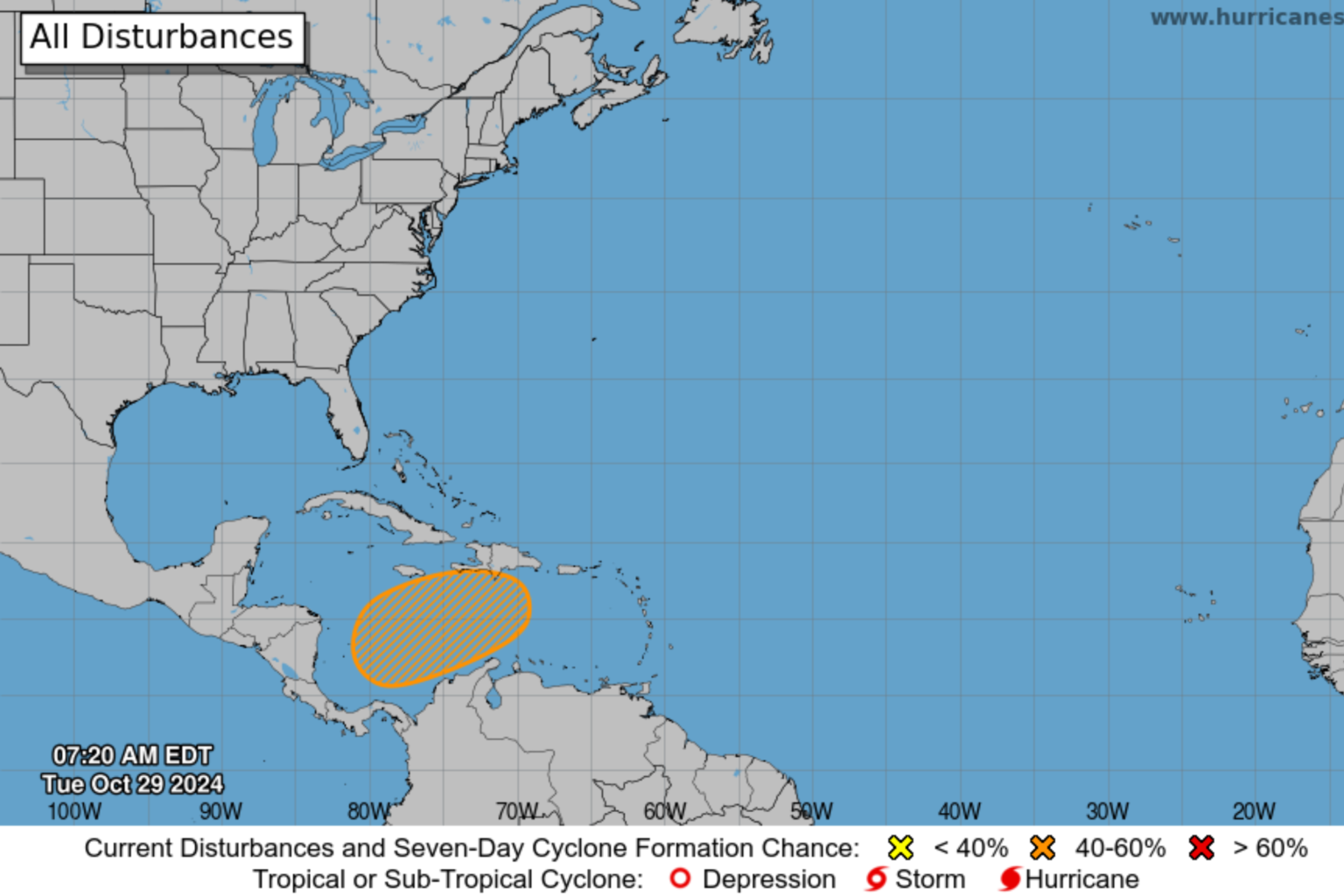After a deadly hurricane season this year, reports of a possible storm brewing in the Caribbean have stoked fears of another hitting as soon as this week. Here is what we know about it.
Parts of the U.S. have been battered by five hurricane landfalls this year: Beryl, Debby, Francine, Helene and Milton. Together these storms resulted in hundreds of people being killed and multiple communities left devastated by destruction.
Although the Atlantic hurricane season does not officially end until November 30, hurricanes in November are extremely rare.
The U.S. has only been hit by four November hurricanes since 1851, Phil Klotzbach, a senior research scientist for the Department of Atmospheric Science in the Walter Scott, Jr. College of Engineering at Colorado State University, told Newsweek.
But the National Hurricane Center, in Miami, Florida, forecast on Tuesday that “a broad area of low pressure is likely to develop over the southwestern Caribbean Sea in a couple of days.”
It said “gradual development” is possible, with the risk of a tropical depression forming later this week, or over the weekend, as the system moves northward or northeastward toward the central Caribbean Sea. There is a 40 percent chance the system will form within seven days, the Center said.
Klotzbach told Newsweek: “I think at this point it’s far too early to know what the future of this system may be. When and where this system forms is going to be critical for determining where the system will track (as well as how strong it could be).”
But AccuWeather hurricane expert Alex DaSilva told Florida newspaper Naples Daily News that “if all the pieces come together, (the system) could even become a hurricane.”
“Storms in the Caribbean usually move to the north or northeast in November. This means that residents and visitors from Florida (including the Gulf Coast) to the Carolinas will have to keep a close eye on development,” DaSilva said in his AccuWeather forecast.
“Even if a tropical storm forms and tracks into Mexico or Central America, changing steering winds can turn that storm to the northeast and toward Florida later on,” he added.
The last time a hurricane hit the U.S. during November was in 2022, when Nicole made landfall in Florida. Before that, Kate came ashore in November 1985 and Yankee made landfall in November 1935, both in Florida. In November 1861, Expedition made landfall in North Carolina.
Klotzbach told Newsweek: “In general, vertical wind shear in November is quite strong. Vertical wind shear is the change in wind speed and direction with height in the atmosphere. Too much shear tears apart hurricanes.
“One of the few parts of the Atlantic where the shear can sometimes still be conducive for hurricane formation is in the Caribbean. Typically, if we’re going to get strong hurricanes in November, they form in the Caribbean.”
Forecasters have warned that unusually warm ocean temperatures could fuel up to three named tropical storms in the Atlantic basin during November, with activity possibly extending into December.
“We’ve been saying since March that the end of this year’s hurricane season could be quite active,” DaSilva said in a media advisory on Monday, October 28.
Read the full article here














